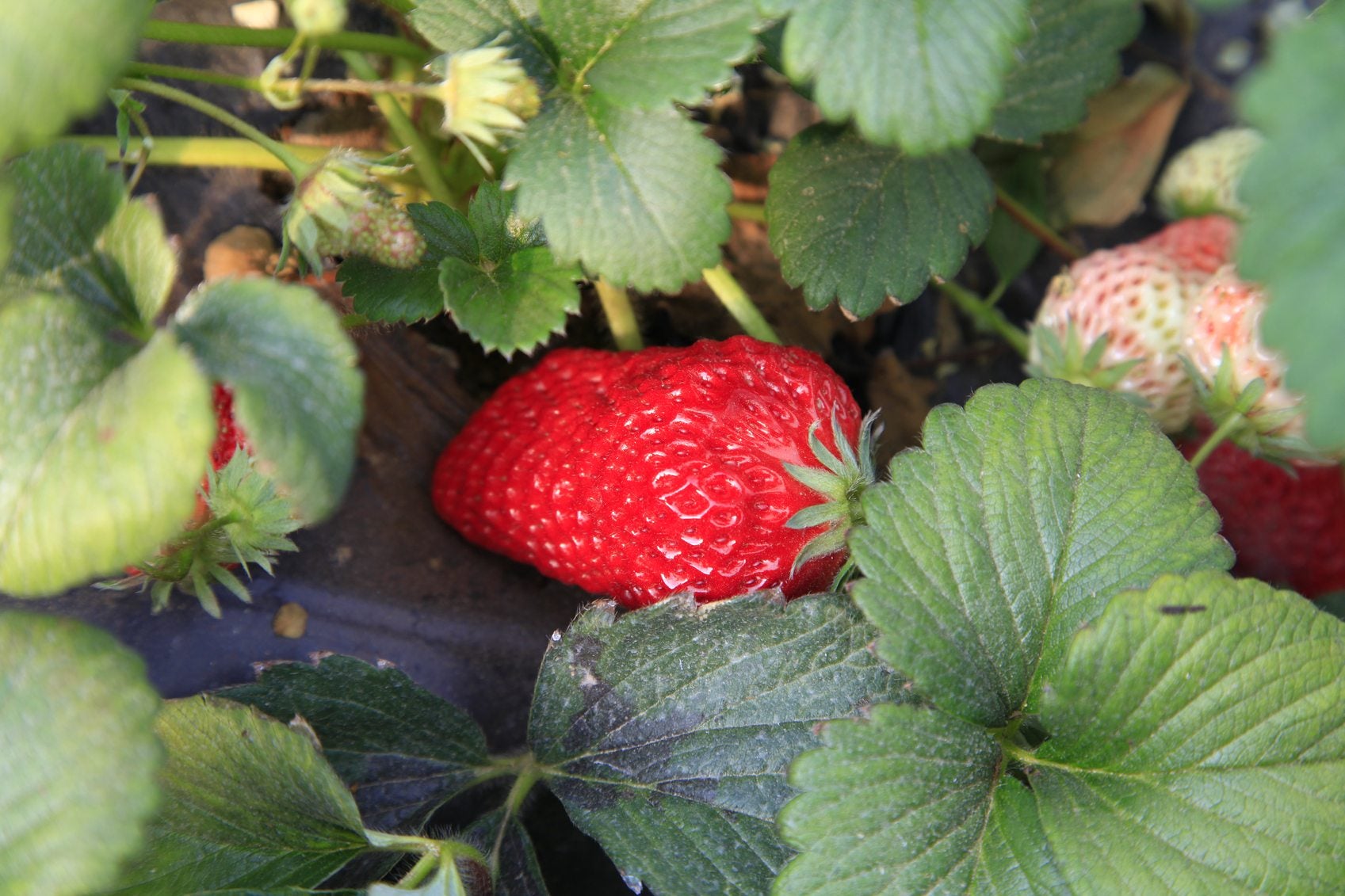Strawberry Plant Feeding: Tips On Fertilizing Strawberry Plants

I don’t care what the calendar says; summer has officially started for me when the strawberries start fruiting. We grow the most common type of strawberry, June-bearing, but whichever type you grow, knowing how and when to fertilize strawberries is the key to an abundant harvest of large, luscious berries. The following information on strawberry plant feeding will help you attain that goal.
Prior to Fertilizing Strawberry Plants
Strawberries are resilient and can grow in many different settings. Knowing when and how to fertilize strawberry plants will ensure a bountiful harvest but, along with strawberry plant feeding, there are a few other tasks to do to ensure healthy plants that will provide the biggest yields. Plant the berries in an area that receives at least 6 hours of full sun in well-draining soil in USDA zones 5-8. They prefer rich, fertile soil that contains plenty of organic matter.
Once you have the berries situated, it is important to water them regularly. Strawberries dislike wet soil, but they also don’t tolerate drought well, so be consistent in your watering. Keep the area around the berry plants free of weeds and keep an eye out for any signs of disease or pests.
A layer of mulch, like straw, underneath the leaves of the plants will prevent water splashing onto the soil and then onto the foliage from passing on soil pathogens. Remove any dead or decaying foliage as well, as soon as you spot it.
Also, don’t plant the berries in an area that has previously been home to tomatoes, potatoes, peppers, eggplant, or raspberries. Diseases or insects that may have plagued those crops can be carried over and affect the strawberries.
How to Fertilize Strawberry Plants
Strawberry plants need a lot of nitrogen in early spring and again in late fall as they are sending out runners and producing berries. Ideally, you have prepared the soil before planting the berries by amending with compost or manure. This will enable you to lessen or eliminate the amount of additional fertilizer the plants need.
Otherwise, fertilizer for strawberries may be a commercial 10-10-10 food or, if you are growing organically, any of a number of organic fertilizers. If you are using a 10-10-10 fertilizer for strawberries, the basic rule of thumb is to add 1 pound (454 g.) of fertilizer per 20-foot (6 m.) row of strawberries one month after they are first planted. For berries that are over a year old, fertilize once a year after the plant has produced fruit, in the mid- to late summer but definitely before September.
Gardening tips, videos, info and more delivered right to your inbox!
Sign up for the Gardening Know How newsletter today and receive a free copy of our e-book "How to Grow Delicious Tomatoes".
Use ½ pound (227 g.) of 10-10-10 per 20-foot (6 m.) row of strawberries. For June bearing strawberries, avoid fertilizing in the spring since the resulting increased foliage growth cannot only increase the incidence of disease, but also produce soft berries. Soft berries are more susceptible to fruit rots, which can in turn reduce your overall yield. Fertilize June bearing varieties after the last harvest of the season with 1 pound (454 g.) of 10-10-10 per 20-foot (6 m.) row.
In either case, apply the fertilizer around the base of each berry plant and water in well with about an inch (3 cm.) of irrigation. If, on the other hand, you are devoted to growing the fruit organically, introduce aged manure to increase the nitrogen. Don’t use fresh manure.
Other organic options for fertilizing strawberries include blood meal, which contains 13% nitrogen; fish meal, soy meal, or alfalfa meal. Feather meal can also increase the nitrogen level, but it releases very slowly.

Amy Grant has been gardening for 30 years and writing for 15. A professional chef and caterer, Amy's area of expertise is culinary gardening.
-
 Looking For Plants To Give You The Soft And Fuzzies? Try These 5 Fuzzy Leaf Plant Options
Looking For Plants To Give You The Soft And Fuzzies? Try These 5 Fuzzy Leaf Plant OptionsLovers of texture, drama, silver foliage and tactile plants will adore these special sensory garden additions. These fuzzy leaf plant options will leave you all aglow
By Susan Albert
-
 Get Ready For A Summer Of Hummers! Grow These Full Sun Hummingbird Plants and Flowers
Get Ready For A Summer Of Hummers! Grow These Full Sun Hummingbird Plants and FlowersIf you’re lucky enough to enjoy a sunny backyard, make sure you are maxing out on your pollinator opportunities and grow these full sun hummingbird plants and flowers
By Tonya Barnett